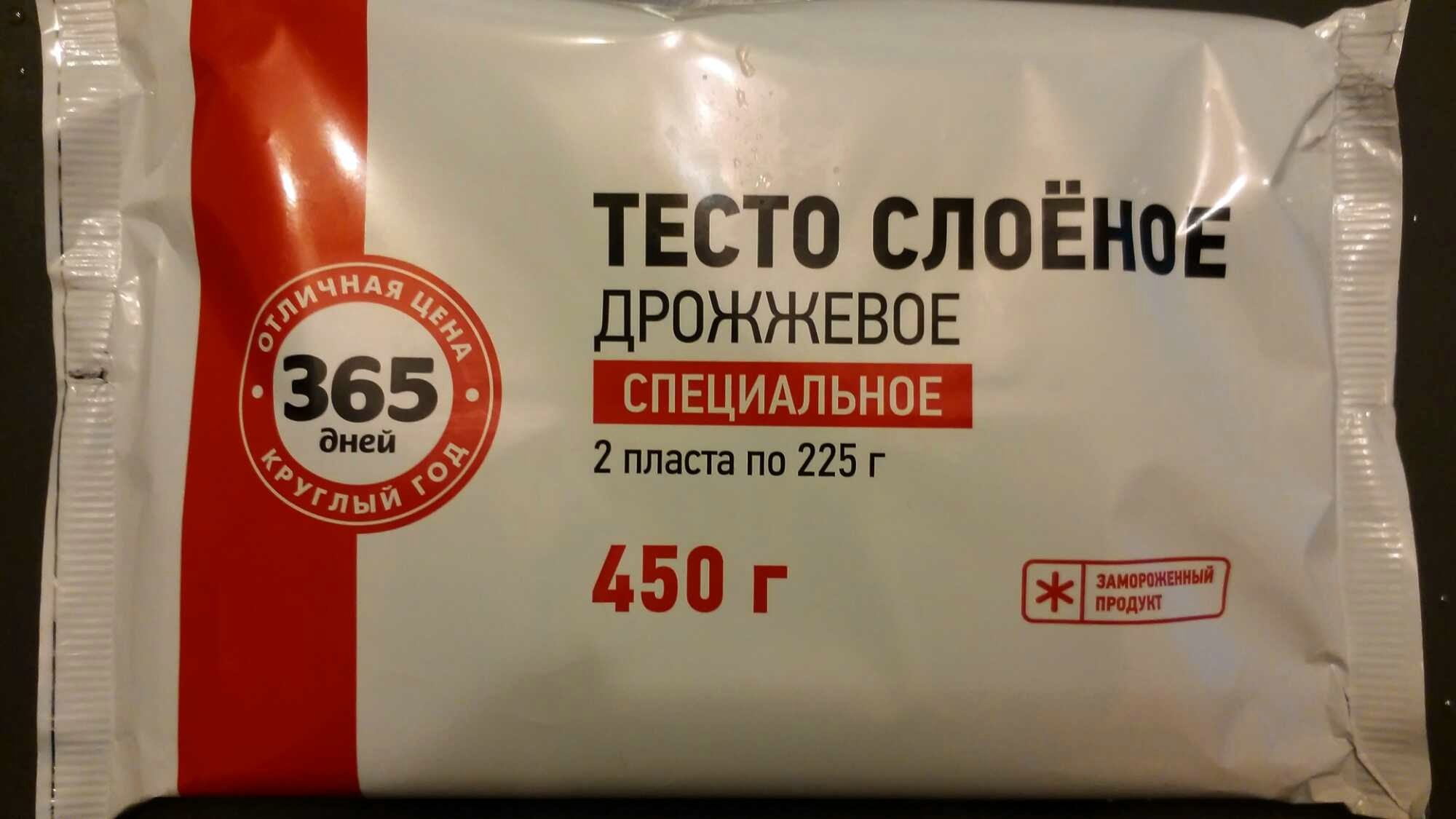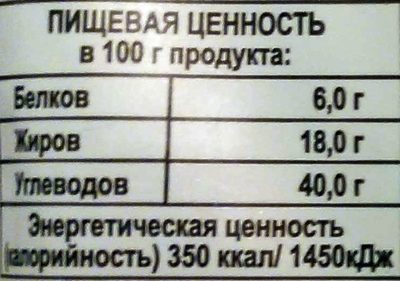Тесто слоёное дрожжевое специальное - 365 дней - 450 г (2 пласта по 225 г)
This product page is not complete. You can help to complete it by editing it and adding more data from the photos we have, or by taking more photos using the app for Android or iPhone/iPad. Thank you!
×
Barcode: 4606068161200 (EAN / EAN-13)
Common name: Полуфабрикат из теста замороженный. Тесто слоёное дрожжевое.
Quantity: 450 г (2 пласта по 225 г)
Packaging: ru:Замороженный, ru:Мягкая упаковка
Brands: 365 дней
Categories: ru:Полуфабрикат, ru:Тесто
Labels, certifications, awards: EAC, ru:Замороженный продукт, ru:ТУ 9116-009-50023147-2001
Stores: Лента
Countries where sold: Russia
Matching with your preferences
Environment
Packaging
Transportation
Report a problem
Data sources
Product added on by ashed
Last edit of product page on by ashed.
Product page also edited by bleakpatch.
If the data is incomplete or incorrect, you can complete or correct it by editing this page.









